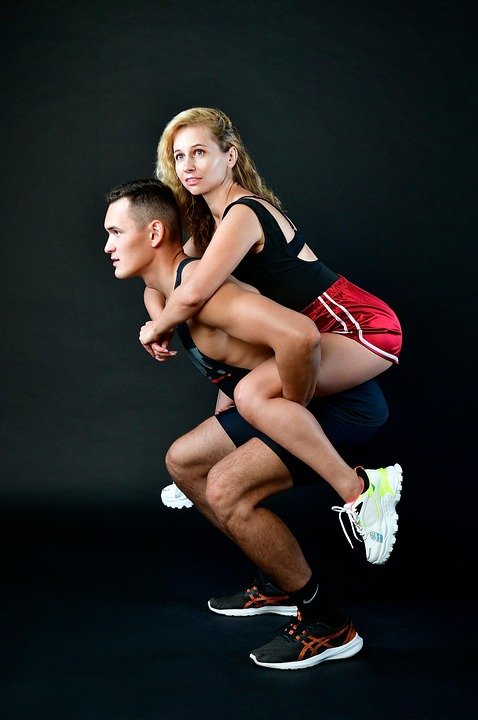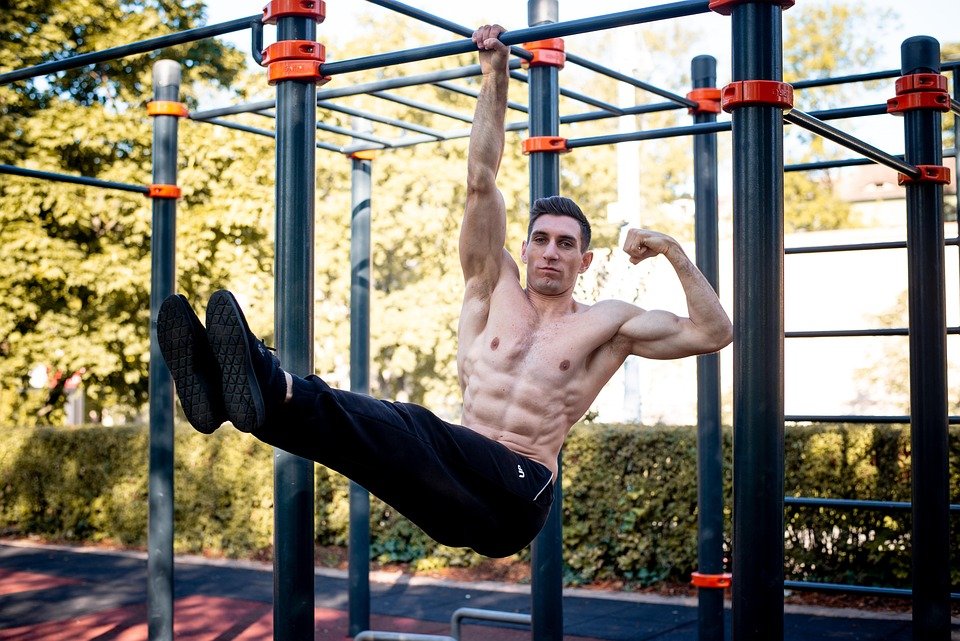This isn’t Neal McDonough’s first rodeo, but after training for his role as a rodeo legend, the veteran actor is now moving with the same energy he showed on pitching mounds of Syracuse University more than four decades ago.
At an age when most actors begin their evolution into grizzled grandfathers, McDonough, at 59, has re-sculpted himself into a chiseled action hero. He can proudly tear off his shirt mid-scene—he’s got the abs to prove it. And throughout this body-transformation journey, he’s become re-energized, adding combination of power and stamina that allows him keep up with actors, and even some athletes, half his age.
“I didn’t know that I could have a six-pack at this age—I didn’t think it was possible,” he admits. “When I ripped my shirt off and I could see all the young rodeo guys, like, whoa, I didn’t see that coming. That was my badge of honor.”
McDonough’s career has ranged from loyal 1st Lieutenant Buck Compton in Band of Brothers to a futuristic crime fighter in Minority Report. Fans of the hit series Yellowstone may know him best as Montana power player Malcolm Beck, a role that cemented his status as an on-screen force.
But for his recent rodeo role as Joe Wainwright—a retired champion bull rider who decides to ride one more time in order to pay for his grandson’s life-saving brain surgery—McDonough had to up his game in the gym. At first, he had some doubts about nailing the look of a legitimate professional bull-riding grandfather in the Last Rodeo. “I was worried I could never have that Clint Eastwood body, that I would never look like a guy who was a one-time absolute lethal badass on a bull,” he admits.
Going from Yellowstone cowboy to a champion bull rider required McDonough to go all-in on a complete physical and mental overhaul. He enlisted the help of a personal trainer, committed to a months-long early morning workout routine, and totally revamped his nutrition. The results: a leaner, stronger physique—and, of course, the on-screen six-pack.
“I was so proud of that specific moment, because we built up to it,” he says. “When I wrote it in the script, when I rip off my shirt, that moment was in the back of my mind.”
He’s now more muscular than he’s been in decades and can now claim his action star status. By his own admission, however, McDonough is far from competing with the likes of fit 50-something actors such as Frank Grillo and Jason Statham for screen time. Instead, the down-to-earth actor’s motivation for more muscle is directed toward family longevity rather than film legacy. “I want them to see that their dad’s 59 years old, he’s still playing ball, and he’s still tough as nails,” he says. “If anybody messes with the family, he’s going to be the first one to jump in and throw a punch. And that’s kind of who I am.”
Neal McDonough’s 40-Year Fitness Evolution
Decades before McDonough’s fitness approach was shaped around maintaining macros and other muscle-building strategies, his old-school regimen was partly molded by the archaic “run till you puke, then run some more” mentality as a Syracuse pitcher. “Our job as pitchers was just to run stadiums for as long as you could,” McDonough recalls. “My coach would say:
‘McDonough, what did you have for lunch?’
I’d say, ‘Roast beef sandwich, sir.’
‘I want to see it.’
And he was dead serious—if you weren’t throwing up running, then you weren’t doing your job hard enough.”
Today’s athletes may be spoiled by post-workout luxuries such as infrared saunas, ice baths, and red light therapy. In those days, McDonough says recovery was simplistic and potentially dangerous. “Six aspirin and a six pack—that’s how you fixed yourself up after,” he jokes. “We didn’t have all the bands or supplements players have now. I was just throwing anything in my system other than steroids that would get me as big and as strong as possible.”
By 2025, the shift in strategies applies to nutrition as well. Sober since 2016, McDonough has seen a positive change in how his body functions in the gym, even before connecting with St. John. The combination of more training and no beer, however, has elevated his fitness to an even greater level.
“Beer was my thing,” he says. “I drank up too much beer, and would get bloated, and was carrying around an extra 15 pounds of fat. As soon as I started giving up beer, I started feeling my body and mindset changing.”
McDonough doesn’t count calories, but sticks to a routine of healthy staples—chicken, spinach, and oatmeal, to name a few. Unlike his college days, and with a constantly busy schedule, he relies on supplements more than ever. It’s part of the reason why he partnered with Flip My Life. “Now, there’s just so much stuff over the counter that you can stay in shape with. But, you know, we certainly didn’t have any kind of protein powder like Flip My Life, that’s for certain.”
The Blueprint That Helped Neal McDonough Shred for ‘Last Rodeo’
When researching his role for The Last Rodeo, which he also co-wrote, McDonough underestimated the athletic look many of today’s professional bull riders possess. Losing layers of fat to look the part became another challenge in nailing the role of Joe Wainwright.
“I met a couple of the rodeo guys just when I started writing the film, and I noticed how shredded these guys are—just top athletes,” he says. “We worked so hard to make sure that we didn’t cheat the audience. We wanted to be 100 percent believable.”
The “we” he was referring to was trainer Scott St. John. The pair of New England transplants, now living in Los Angeles, first crossed paths at a sporting event. McDonough shared his vision for what he wanted to achieve, and from there, the two went to work.
“I knew Neal was an athlete, so that made it really simple as far as what we were going to be able to do together,” Scott recalls. “We had a very short window of time, so I knew it was going to be really intense. I knew we had to do it seven days a week, and we were really going to have to balance the body.”
St. John packed a lot into his program, mixing plenty of bodyweight moves like pushups and chin-ups with heavy kettlebell exercises to keep it challenging but not overwhelming. “You don’t need a lot of equipment to get into really great shape, and you don’t need to overcomplicate it,” he says.
To keep McDonough’s body moving and burning, conditioning drills became a primary training tactic. Exercises like med ball throws, slams, and squat jumps were regularly implemented. “We focused in on building muscle, but then also keeping the intensity really high for most of the workout to help really crank up his metabolism.”
To simulate the chaotic movements of a bull ride, BOSU ball balance drills, split-stance deadlifts, and plyometric moves like squat jumps and snatches were key. Scott even included post-workout recovery yoga to maintain McDonough’s mobility.
“We put in a lot of balance work, core work, strength work, and explosive work that all relate over to what bull riding is all about,” St. John says.
While the process was a painstaking test of training discipline, it took just one scene—his defining shirtless moment—for McDonough to confirm the program’s success.
“No one had seen me with my shirt off,” he says. “And there’s my snap button shirt, and I ripped it. I could see all the young rodeo guys, like, I didn’t see that coming. That was awesome.”
Neal McDonough’s Next Chapter
Since the release of The Last Rodeo this past May, McDonough continues to thrive in both his career and with his still-shredded physique. He starred in another film, Guns & Moses, and has a recurring role in the Sylvester Stallone hit series Tulsa King.
“I couldn’t be in a better spot in my life than I am at this moment,” he says.
He’s also become a part-owner of the PBR’s Austin Gamblers. “To be just immersed in the world of bull riding is—it’s pure Americana, and that’s what I love about it,” he says. “To be part of the PBR family now, and to be part of it, you know, owner of one of the teams, it’s so awesome. I can’t speak highly enough about what PBR stands for, what they do for their fans, and how amazing the athletes are.”
As a longtime user of Flip My Life—the supplement company he’s partnered with—McDonough has seen the results firsthand, especially when the shirt comes off. He says teaming up with the brand was the logical next step. “It changed my body so much and changed my energy,” he says.
More than a year since training for the role of Joe Wainwright, McDonough still continues a good portion of St. John’s routine, developing a new love for kettlebell training. “My body doesn’t ache as much doing kettlebells,” he says. “You’re not just jacking up weight—there’s a flow to it. It’s almost like ballet with weights. It’s changed the way that I think about workouts—it’s changed the way my body looks.”
Pushing 60, no matter what his next role may be—action star or wise old grandfather—McDonough will be ready. He may already be searching for the next shirt to tear off. “I want to be the best version of me possible for as long as I can. I’m just getting started.”
This post is brought to you by: Source link
Neal McDonough Flipped the Script to Get Shredded for His Most Challenging Role Yet, 2025-09-26 10:25:00

















